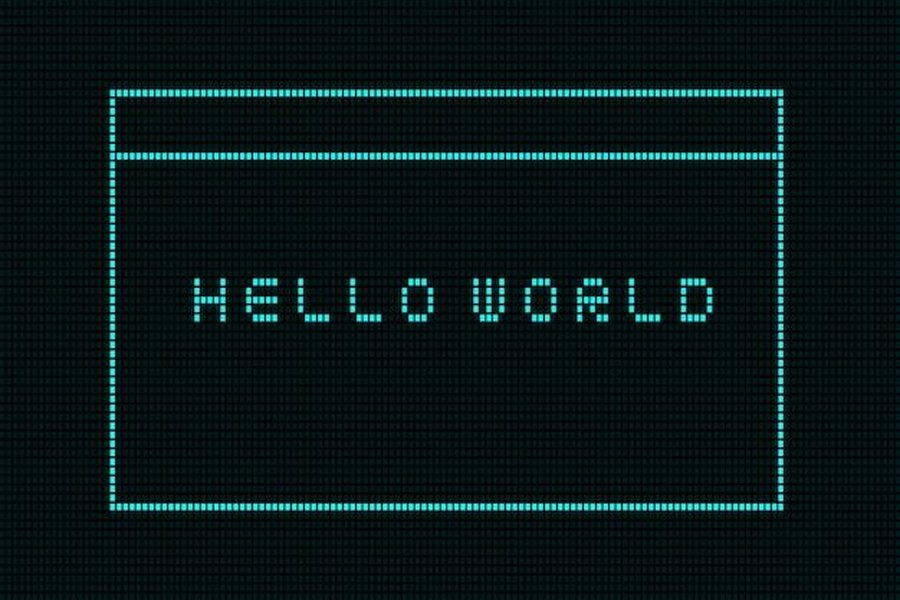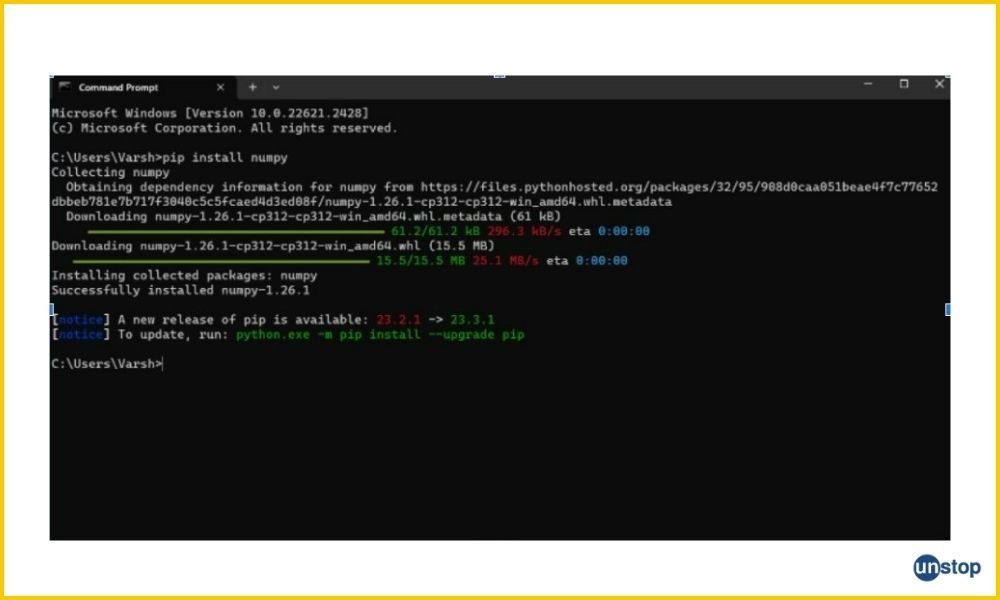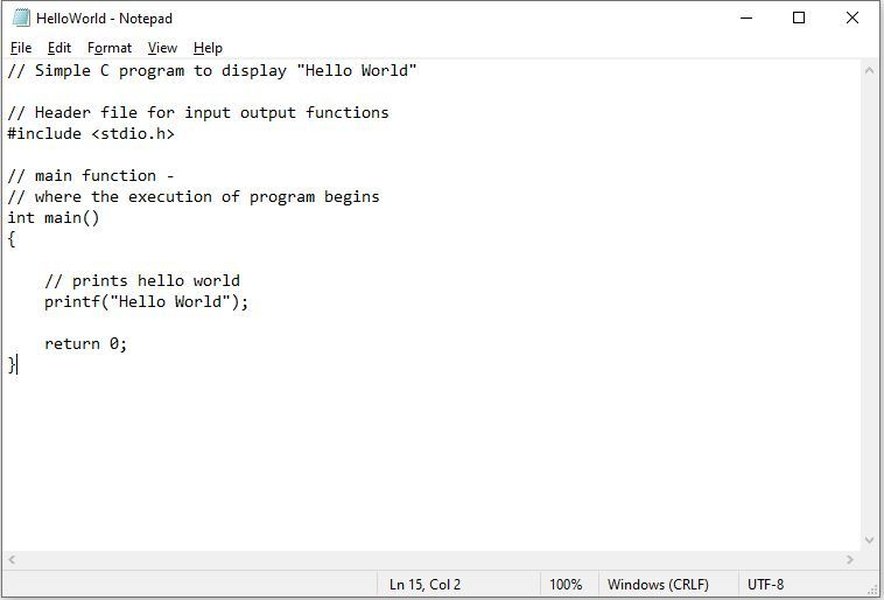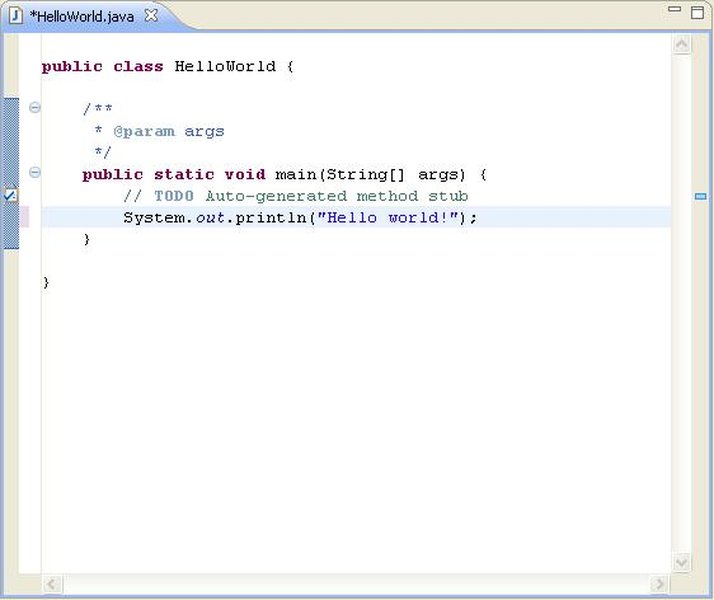
Hello World?: Unpacking the Iconic First Step in Programming
Discover the meaning, history, and enduring importance of the simple program that launches countless coding journeys.
Highlights: Key Insights into "Hello, World!"
- A Universal Starting Point: "Hello, World!" is typically the very first program written when learning a new programming language, serving as a basic syntax and environment test.
- Historical Significance: Popularized by the seminal 1978 book *The C Programming Language*, it has become a deeply ingrained tradition and cultural touchstone within the programming community.
- More Than Just Code: Beyond its simplicity, it helps beginners build confidence, verify their setup, and grasp fundamental output concepts, making it an effective educational tool.
What Exactly is a "Hello, World!" Program?
Defining the Quintessential Beginner's Code
A "Hello, World!" program is a fundamental and extremely simple computer program whose sole purpose is to display or output the message "Hello, World!" (or a similar phrase) to a display device, most commonly the console or terminal screen. It represents the most basic form of output achievable in a given programming language.
Its primary functions are:
- Environment Sanity Check: Successfully running "Hello, World!" confirms that the core components of the programming environment—like the compiler, interpreter, libraries, and execution pathway—are correctly installed and configured. It's a quick diagnostic test.
- Introduction to Syntax: It provides an immediate, gentle introduction to the most basic syntax elements of a language, such as how to define an executable block of code (like a
mainfunction) and how to invoke an output command (likeprintorprintf). - Building Confidence: For absolute beginners, writing code that produces a tangible, visible result, no matter how simple, offers instant gratification and builds confidence to tackle more complex tasks.
While seemingly trivial, this small program acts as a crucial first step, ensuring the foundational setup is working before moving on to more sophisticated programming concepts.
The Story Behind the Tradition: Where Did "Hello, World!" Come From?
Tracing the Origins of a Programming Ritual
The tradition of using "Hello, World!" as the introductory program is widely attributed to Brian Kernighan. While working at Bell Labs, he authored a tutorial for the B programming language (a precursor to C) in 1972 that included an example printing "hello, world".
However, its widespread popularization came with the publication of the landmark book The C Programming Language in 1978, co-authored by Kernighan and Dennis Ritchie (the creator of C). The first example program in this highly influential book demonstrated basic input/output by printing "hello, world" (lowercase, without exclamation). This cemented the phrase's place in programming folklore.

The iconic phrase often symbolizes the bridge between human language and computer instruction.
Since then, "Hello, World!" has transcended C and become a near-universal standard across countless programming languages and tutorials. It serves as a shared cultural experience, a rite of passage for programmers, symbolizing the beginning of their journey into coding.
Why is "Hello, World!" Still Significant Today?
The Enduring Value of Simplicity
Even in the age of complex software and advanced development tools (as of April 29, 2025), the "Hello, World!" program retains its importance for several reasons:
- Educational Foundation: It remains the ideal starting point for teaching programming fundamentals. It introduces concepts like functions, output streams, strings, and the compile/run cycle in the simplest possible context.
- Environment Verification: When setting up a new development environment, language, or framework, running a quick "Hello, World!" is often the fastest way to confirm that everything is installed and configured correctly. If it runs, the basic toolchain is likely functional.
- Language Comparison: The simplicity allows for easy comparison of the basic syntax and boilerplate code required by different programming languages. Seeing how various languages achieve the same simple task highlights their design philosophies.
- Debugging Introduction: If the program fails to compile or run, it provides a beginner's first exposure to debugging, often involving simple syntax errors or configuration issues.
- Documentation Standard: Many programming language documentation sites and tutorials still begin with "Hello, World!" as the first example, providing a consistent and familiar entry point for learners.
It's a testament to its effectiveness that this simple program continues to be the standard first step, bridging the gap between human intention and computer execution.
Seeing "Hello, World!" in Action: Examples Across Languages
How Different Languages Say "Hello"
The core task remains the same, but the specific code required to print "Hello, World!" varies significantly between programming languages. Here are a few examples in popular languages:
Python
Python is renowned for its readability and concise syntax. Printing "Hello, World!" is typically a one-liner:
print("Hello, World!")
Python's straightforward approach to printing output.
You save this code in a file (e.g., hello.py) and run it from the terminal using python hello.py.
C
As the language that popularized "Hello, World!", C requires a bit more structure, including importing a standard library and defining a main function:
#include <stdio.h>
int main(void) {
printf("Hello, World!\n"); // \n adds a newline character
return 0; // Indicates successful execution
}
The classic C implementation involves standard libraries and a main function.
This code needs to be compiled first (e.g., using GCC: gcc hello.c -o hello) and then executed (./hello).
Java
Java is an object-oriented language, and its structure reflects this, even for simple programs. "Hello, World!" requires a class definition and a main method:
public class HelloWorld {
public static void main(String[] args) {
System.out.println("Hello, World!");
}
}
Java's version requires class and method structure.
You save this as HelloWorld.java, compile it (javac HelloWorld.java), and then run it (java HelloWorld).
JavaScript (Node.js)
In a server-side environment like Node.js, or directly in a browser's developer console, JavaScript's "Hello, World!" is concise:
console.log("Hello, World!");If saved in a file hello.js, it can be run using node hello.js.
Go
Go emphasizes simplicity and requires package declaration and importing the format (fmt) package:
package main
import "fmt"
func main() {
fmt.Println("Hello, World!")
}Run this code using go run hello.go.
Rust
Rust focuses on safety and performance. Its "Hello, World!" uses a macro for printing:
fn main() {
// println! is a macro that prints text to the console
println!("Hello, World!");
}Compile with rustc main.rs and run the resulting executable ./main.
Comparing "Hello, World!" Across Languages: A Visual Perspective
Complexity and Verbosity at a Glance
The "Hello, World!" program serves as a simple benchmark to visually compare aspects of different programming languages, such as how much code is needed (verbosity), how much setup or boilerplate is required, and the perceived ease for a beginner. This radar chart provides a subjective comparison based on these factors for the languages discussed.
This visualization highlights how languages like Python and JavaScript offer a gentler introduction with less code, while C, Java, Go, and Rust require more setup or understanding of concepts like compilation, data types, or specific structures even for this simple task.
"Hello, World!" Language Characteristics Table
A Quick Comparison
This table provides a side-by-side look at the "Hello, World!" program in different languages, noting key characteristics relevant to beginners.
| Language | "Hello, World!" Code Snippet | Typical Lines of Code | Beginner Friendliness (Subjective) | Requires Compilation |
|---|---|---|---|---|
| Python | print("Hello, World!") |
1 | Very High | No (Interpreted) |
| C | #include <stdio.h> |
5 | Medium | Yes |
| Java | public class HelloWorld { |
5 | Medium-Low | Yes |
| JavaScript (Node.js) | console.log("Hello, World!"); |
1 | High | No (Interpreted) |
| Go | package main |
6 | Medium | Yes |
| Rust | fn main() { |
3 | Medium-Low | Yes |
Note: Line counts can vary slightly based on formatting. Beginner friendliness is subjective and relates specifically to the ease of writing and understanding this initial program.
Visualizing the Concept: A "Hello, World!" Mind Map
Mapping the Core Ideas
This mind map provides a visual overview of the key concepts associated with the "Hello, World!" program, illustrating its different facets and connections within the world of programming.
Watch "Hello, World!" Across Many Languages
See the Variations in Action
This video demonstrates how the simple "Hello, World!" program is implemented across 15 different popular programming languages. It's a great way to quickly see the syntactic diversity and varying levels of code required to achieve this fundamental task, reinforcing the idea that while the goal is the same, the path to get there differs significantly between languages.
Frequently Asked Questions (FAQ)
Quick Answers to Common Questions
Why is it called "Hello, World!"?
Is "Hello, World!" useful beyond learning?
Do all programming languages have a "Hello, World!" example?
What does "Hello, World!" check specifically?
Recommended Reading
Explore Further Topics
- Delve deeper into the history of the C programming language and its influence.
- Compare Python and Java to see which might be better for starting your programming journey.
- Learn about other fundamental programming concepts beyond printing output.
- Understand the difference between how compiled and interpreted languages execute code.
References
Sources Used for This Information
Last updated April 29, 2025